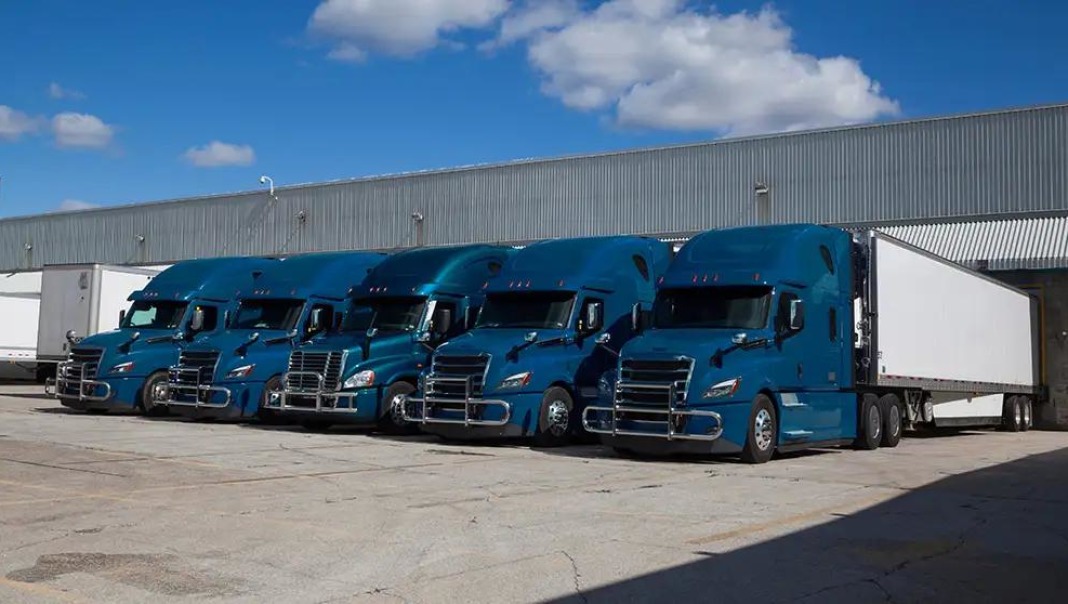5 tips for managing logistics
Wednesday, April 17, 2024
Reference: FCC
 Moving your food or beverage product from Point A to Point B has its hurdles. Even in today’s super-connected world, there are gaps in logistics systems. It takes a keen sense of your product’s needs to determine who and how to get it to its destination.
Moving your food or beverage product from Point A to Point B has its hurdles. Even in today’s super-connected world, there are gaps in logistics systems. It takes a keen sense of your product’s needs to determine who and how to get it to its destination.Mark Lowe, CEO and founder of Lobster Made Easy in Nova Scotia, found that a direct route didn’t exist for his product.
Lobster Made Easy, a microwaveable frozen Atlantic Lobster product, is sold through retailers and a network of mobile vending units offering prepared dishes and frozen lobster. Lowe decided to expand from Nova Scotia to Texas because he could reach the equivalent of Canada’s population in a single state that doesn’t have a cold and snowy winter season where food trucks stay in the garage.
He quickly learned from freight brokers that no one shipped frozen food directly from Atlantic Canada to Texas, but he found Nova Scotia to Boston as a partial route that was a viable option. It’s still far from Texas, but he was getting closer. Seeking American carriers to get his product the rest of the way, Lowe learned that carriers in the U.S. are much more competitive than their Canadian counterparts due to the volume of goods, retailers and people in heavily populated areas.
The logistics of getting the lobster to Texas eventually came together, and Lowe learned some important lessons along the way.
Here are five key points to help move your products
1. Know your goalsPhil Dick is an economic and business advisor in the Trade and Economic Development Branch, Ontario Ministry of Agriculture, Food and Rural Affairs. He says food and beverage producers must be clear on how much, where and when their goods need to ship to find the right provider.
2. Ask questions
There’s a lot to learn about logistics, so ask questions. Joseph Edogbeni, CEO and founder of freight broker Heyru Canada points out that questions lead to a better understanding of the industry. You need to know everything from whether the provider offers insurance on the shipment and how much it costs to whether there’s a forklift to offload the shipment and what the receiver’s hours are for shipments.
3. Learn the lingo
The logistics sector has its own set of terms to learn. Does the shipper require a lift gate (a truck ramp that goes to ground level)? Less-than-truckload, or LTL, is less than a full truck of goods. Is the shipment a backhaul, meaning a load on a return trip, or a head haul, which is the initial trip?
Understanding what the shipper provides and comparing what each company offers requires some immersion in the lingo. Lowe’s lobster is LTL, and he says U.S. shippers were competitive with him because they wanted to combine LTL shipments to create a full load.
4. Know the costs
Shelf-stable products are the easiest to find a carrier for, but there’s still a need to understand and appreciate the challenges. When a large shipment goes to a hub, it’s one-stop, but the costs and challenges climb when that shipment needs to be broken apart to go to numerous locations.
“Everybody has the same problem,” says Lowe. “Getting that last mile is much more expensive than the first 3,000.”
5. Look after your product
Some products can’t be shipped together, even as basic as perishable and non-perishables. When dealing with pallets rather than full trucks, ask what else is on the load to ensure your product’s quality on arrival. Seek an experienced provider who’s handled a product like yours in the past since reliability is often the biggest benefit a shipper can provide.
Dick adds that companies with a national or international team can often make a long-haul shipment more affordable. A single driver needs a break, so your product sits and waits.
There are many players in the shipping game. Finding the right solution will take time, but it's worth the investment.
Read More
Sign up to stay connected
- News
- Property Alerts
- Save your favourite properties
- And more!
Joining Farm Marketer is free, easy and you can opt out at any time.
